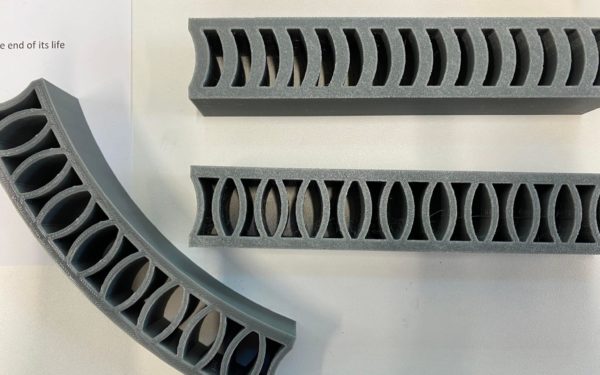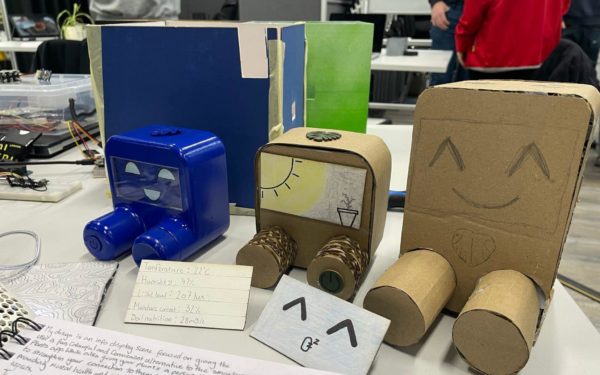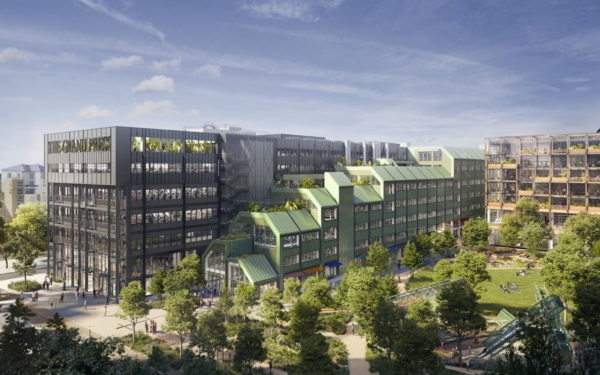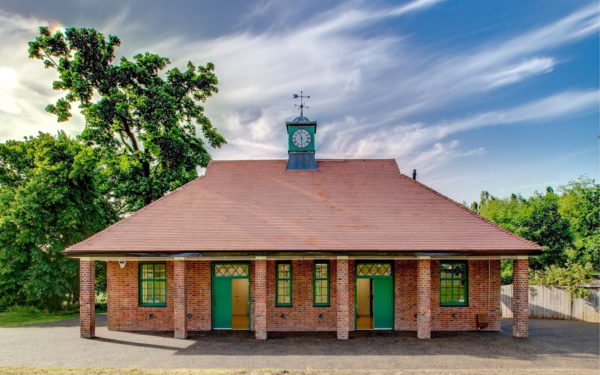
Airless tyres to prevent punctures

Industry project examples
All projects at TEDI-London integrate various engineering disciplines and address real-world challenges. The engineering principles learned in one project can be applied in different contexts throughout the programme. Here are some examples of the projects students have previously tackled with a range of industry partners.
Engineers play a crucial role in product optimisation, whether it’s adding a safety feature to a car or designing an Xbox accessory. They must consider material characteristics, production costs, and efficient large-scale manufacturing.
Students explored this in a project with Brompton Bicycles, known for their quick-folding bikes that ease urban commutes. However, many cyclists feel unsafe around larger vehicles. So to address this, students designed accessories to boost user confidence, presenting their unique concepts to Brompton during a demo day.

Airless tyres to prevent punctures

LED watch to signal nearby traffic

Airbag box for skull protection
User-centred design highlights the important role engineers play in designing with human needs in mind, and how this informs product form, function and optimisation. In this project, students explored this process in collaboration with industry partner SmartyPlants, who have developed a tool to help people take care of their indoor plants better. Their product is a sensor that can be placed in soil to monitor the key conditions of the plant and surrounding environment, providing rich data on factors like light, humidity, nutrients, temperature and moisture.

'BloomBox' nature sound alarm clock

'Plant Buddy' interface with interactive tips and plant care notifications

Vertical 'Compost Tower' to manage water and energy
As part of British Land’s Canada Water Masterplan, the Printworks London nightclub and live music venue is currently undergoing renovation. With a reopening planned for 2026, British Land aims to repurpose the site into a multi-purpose work and leisure space, preserving as much of the existing structure as possible, while minimising embodied carbon and future operational emissions. This offered a unique opportunity for our second-year engineering undergraduates – designing for a real, large-scale building with complex parameters.

Render of the future Printworks building (copyright British Land)

Working across floor 'zones' in groups

A VR walkthrough of the building with Cityscape Digital
All kinds of people – from engineers and stakeholders to members of the public – can be involved in design processes. One design framework that adopts this applied and interdisciplinary approach is called the ‘living lab’. From start to finish, designers working within a living lab setting seek feedback and ideas from multiple perspectives and build their product or solution around the users themselves.
This framework challenges students to address specific real-world issues by developing innovative, inclusive and practical solutions.

Air pollutant tracing device with Sheffield Community Contact Tracers

TEDI sensory room with British Land

Sensory Polytunnel with Dockland Settlements and Bizzie Bodies
Ecological design at TEDI-London is a way of looking at the impact our designs have on ecological systems. This includes our impacts on biodiversity, water and nutrient cycles, carbon emissions and other pollutants, noise and light levels, and the health, comfort and well-being of humans. More often than not, engineers operate within wider ecosystems, so it’s crucial for them to analyse the baseline conditions of the location – what exists already – and assess the potential impact that any changes might have.

The Woodfield Pavilion

Humidity sensor data

Students on a frosty site visit